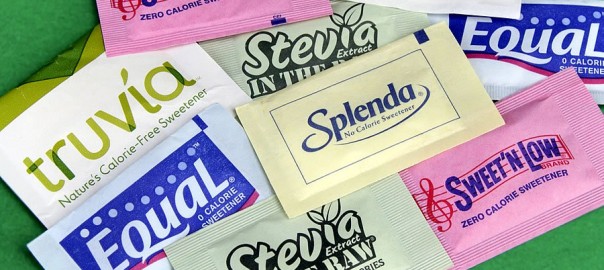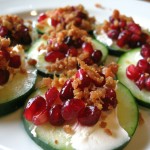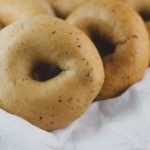
Guide to Sugar-Free Sweeteners and Flavours
Guide to Sugar-Free Sweeteners and Flavours
Regular old sugar is one of the biggest sources of carbohydrates in the typical North American diet, and it’s easy to see why. Sugar is a common ingredient in many of our favourite drinks, like colas, juices, and we even put it in our coffee. Baked goods like cookies, donuts, and pastries are loaded with sugar. Sauces and marinades frequently use sugar to obtain sweet taste characteristics. Even when we opt for what we think are healthier options like fresh fruit, there can be large amounts of natural sugars in them that many people simply just don’t notice.
Given how widespread the presence of sugar is in a huge variety of foods, you’d think that there would be no way to escape from it. For low carb dieters especially, it is indeed a challenge to limit and manage sugar intake in our diets. Fortunately, it is now easier than ever to substitute regular sugar for a completely sugar-free alternative and still maintain the sweetness in the foods we love. Sugar alternatives are now available in many different types, and in forms that can be used in everything from sweetening our drinks to baking amazingly delicious cakes and cookies. In this guide, we’ll explain how to identify regular sugars that should be avoided, and list the most popular sugar substitutes. We’ll talk about what sugar substitutes are actually made from, what their most popular uses are, and where you can find them. Let’s get started!
About Real or Natural Sugars
Natural sugars come in many different types, but they generally all have names that end in –ose. Some examples that you’re probably already familiar with are glucose, dextrose, lactose, and fructose, to name a few. While these are all considered to be ‘simple sugars’, their names tend to indicate in which foods you will commonly find them. For example, lactose is commonly found in dairy and products made from milk, whereas fructose is usually found in fruit and related fruit products. Regardless of where it comes from or what the name is, common sugars are all carbs and need to be carefully managed as part of a low carb diet plan. This means limiting your intake of food products that contain these natural sugars and tracking the carb counts correctly for each portion. While these can be substituted in processed foods with sugar alternatives, there’s no way to take the fructose out of an apple or pear. Fresh foods should be tracked and moderated for their sugar content carefully as you track your daily carb count.
Sugar Substitutes and Sugar-Free Sweeteners
Sugar substitutes have been available for quite a long time, with the first being saccharin, which was discovered in 1879 and introduced to the public as a sweetener in the 1950’s. Use of saccharin has declined in favour of other superior artificial sweeteners that are far more common.
Popular and Common Sugar-Free Sweeteners
Aspartame
One of the most common artificial sweeteners in the world, and also one of the most intensely studied and tested, aspartame was introduced in the 1960’s and can be found in thousands of very popular products around the world. Aspartame is made from a combination of two amino acids, aspartic acid and phenylalanine. It can be used as a table sweetener in powdered form, and acts just like normal sugar but has an approximately 200x stronger sweetening effect, so less is required to achieve the same level of sweetness. Aspartame is used in products ranging from frozen desserts and gelatins to soft drinks and chewing gum. Generally, it is not ideal as a baking ingredient, since aspartame will break down in to its component amino acid when it is heated.
Stevia
One of the newer artificial sweeteners to be introduced to the North American market, stevia has actually been popular in other countries around the world since the 1970’s. Stevia has zero calories, and is made from steviol glycoside, producing a sweetening effect similar in strength to aspartame. Stevia has been used as a sweetener by some of the biggest brands in the world, including Coca Cola and Pepsi, and is commonly found in drinks and sweetener drops used to add flavour to water and other foods. Common trade names for stevia sweeteners include Truvia and PureVia.
Sucralose
Sucralose is made from a base of either sucrose or raffinose that is chemically altered to produce a sugar-free sweetener approximately 600x sweeter than normal sugar. Introduced in the late 1990’s, sucralose found a great deal of success due to its ability to be effectively used as a substitute for sugar in baking and other cooking methods and not breaking down from the heat. Sucralose can be commonly found in everything from drinks, candy, and desserts to baked goods and other prepared foods. Sucralose is more commonly known in North America by its trade name, Splenda.
Sugar Alcohols
In addition to manufactured artificial sweeteners, sugar alcohols are also popular sugar alternatives for low carb dieters. Sugar alcohols can be used much the same as regular table sugar, and their sweetening effects are milder and not nearly as potent in as other artificial sweeteners. Sugar alcohols do not count as carbs since they are digested differently than regular sugars, and do not affect the blood sugar. Some of the most common sugar alcohols used as substitute sweeteners are Xylitol, Erythritol, and Malitol.
Sweetening and Flavouring on the Low Carb Diet
Low carb dieters are fortunate to have such a wide range of sugar subtitutes to choose from. You’ll never need to worry about missing out on sweet treats because of a low carb lifestyle, and there’s no need to force yourself to drink black coffee if that’s not your preference. It’s easy to find great alternatives to regular sugar in your regular routine, or satisfy the occasional craving for something sweet, and here are some of our favourites.
Alternative Table Sweetener
Fill your sugar bowl with an alternative table sweetener like Swerve, which uses the sugar alcohol erythritol as its main ingredient. It’s perfect as a replacement for table sugar, and you can use it in coffee, tea, and many other things that require a little bit of sweetness.
Alternative Baking Sweetener
Not all artificial sweeteners are great for baking, but this brown sugar alternative from LC Foods is made from stevia and works wonderfully in a wide variety of baking recipes. It’s as simple as swapping LC Foods Sweet Brown at a 1 to 1 ratio, so there’s no complicated conversion required for your recipes.
Alternative Flavoured Sweeteners
Artificial sweetener drops and syrups are available in virtually any flavour that you can possibly imagine. Everything from banana and berry to chocolate and caramel flavours are available in convenient concentrated drops that you can use to add a delicious twist to your favourite hot beverages and other foods. Check out the wide range of sugar free flavour drops and sugar free syrups at The Low Carb Grocery.
Sugar Free Recipe Inspiration
If all this talk about sweeteners has you getting a bit hungry, check out this great collection of sugar free recipes over at SugarFreeMom.com. There’s a huge archive of recipes for all kinds of sugar free cooking and baking, and they’re all fantastic. You’ll find ideas for desserts, frozen treats, appetizers, snacks, and more. Start exploring, and we’re sure you’ll find lots of ideas to try for any occasion.
Conclusion
Managing your sugar intake is easier than ever with all these alternative sweeteners available to choose from. You’ll be able to enjoy all the different sweet treats and flavours that the world has to offer with this many options, and you’ll never have to worry about your carb count going off the rails. We hope that this article has encouraged you to explore a few new ways to sweeten up your weekly meal plan, and perhaps inspired you to try a few new baking projects that you’ve always wanted to experiment with.






